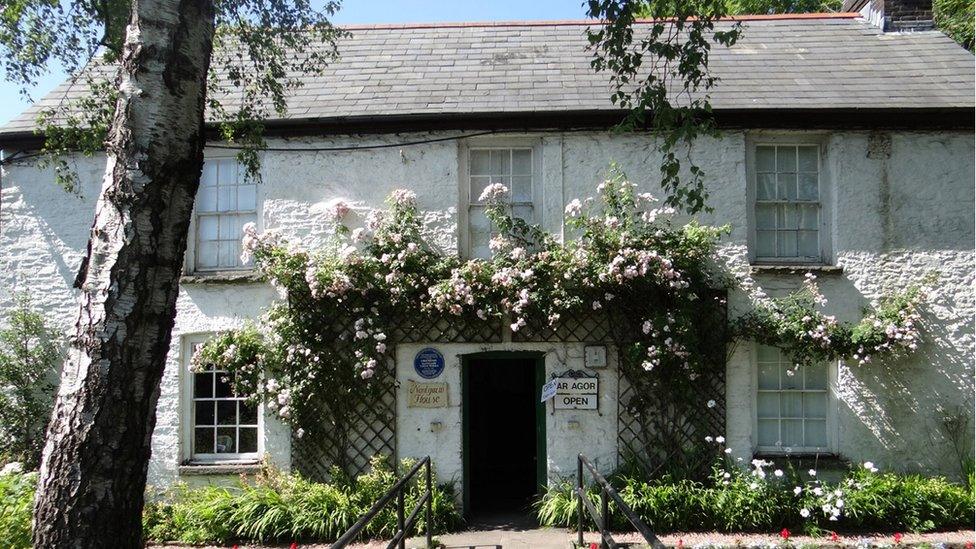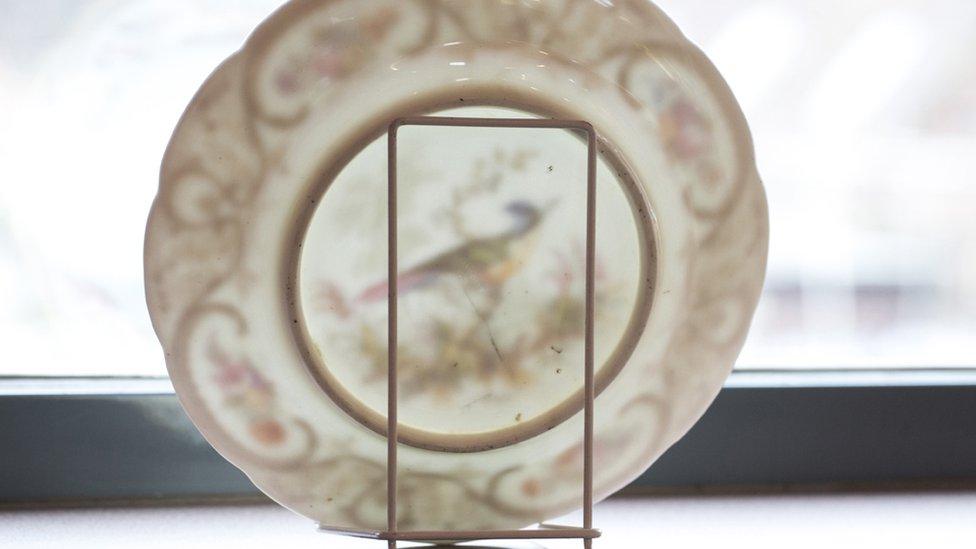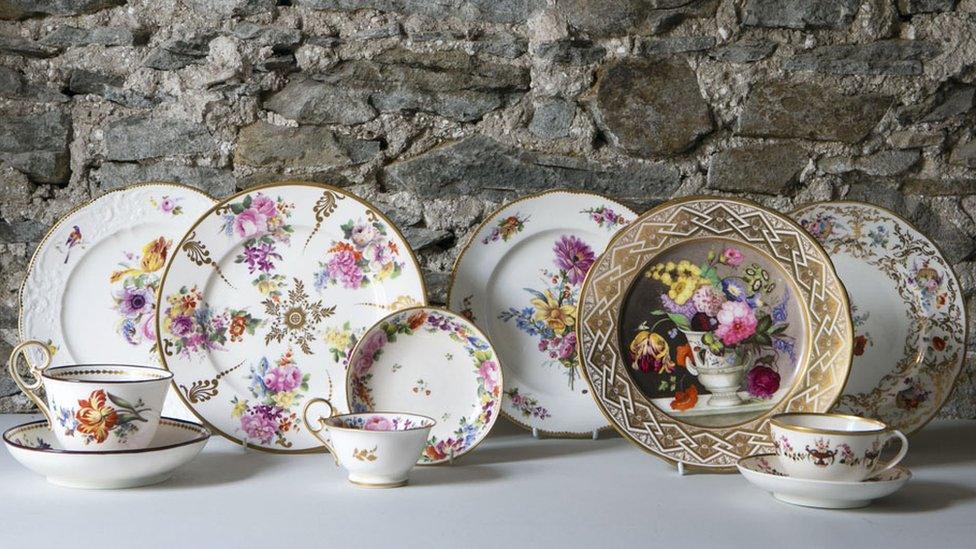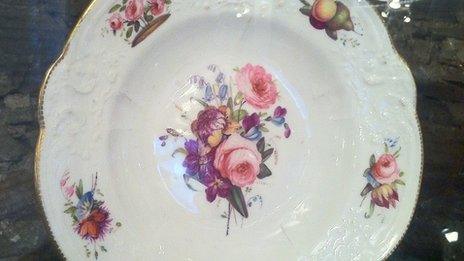Nantgarw Chinaworks: Bid to restart porcelain production
- Published

The factory switched to making stoneware bottles and earthenware until it closed in 1920, before later reopening as a museum
A bid has been launched to uncover the 200-year-old secret recipe of what was once declared the finest porcelain ever made, to restart production.
Items made at Nantgarw Chinaworks, near Caerphilly, once decorated the dinner tables of royalty and aristocracy.
But it was very difficult to fire, leading to losses of up to 90% and the ultimate closure of the works in 1821 after just four years.
Now, it hopes to uncover the original recipe and start making it again.

Renowned porcelain expert Henry Sandon (pictured) has described Nantgarw porcelain as one of the finest in the world

Henry Sandon praised the "extraordinary translucency" of Nantgarw porcelain
Artist and potter William Billingsley's recipe was revered as the whitest, finest and most translucent porcelain ever made.
Plates, cups, bowls and decorative items were fired in bottle kilns before being sold to London's finest porcelain decorators, ending up on the dining tables of the rich and famous across the world.
But it tended to warp and crack in the kiln and there are few remaining examples of it - most of which are held in collections at National Museum of Wales and London's V&A.
After porcelain production ceased, the factory switched to making stoneware bottles and earthenware until it closed in 1920, before later reopening as a museum.
For 200 years the exact formula and production methods have remained a mystery.
But recent analysis and research, including coded documents found in museum archives, look to provide the opportunity to recreate the porcelain for the first time.
Using traditional and modern materials, practices and kilns, the Nantgarw Chinaworks team wants to create a small production facility to make items at the same premises used by Billingsley in 1813.
The team, including Nantgarw's resident artists, university specialists, clay manufacturers, industrial chemists, mould makers and porcelain and bone china experts, will work together to improve the original porcelain body and glaze.

The crockery was elaborately decorated
But to get the project started, the works needs to raise £15,000 through the Art Happens crowdfunding campaign, hosted by charity Art Fund.
The money will pay for new kilns, materials and equipment and donors will get a chance to own one of the first pieces made.
Charles Fountain, project manager at Nantgarw Chinaworks, said: "This is not just an academic exercise. We are keen to start making new work at the china works and encouraging other contemporary artists to start working with this exceptional porcelain.
"If the project is successful then in 2018/19 we plan to commission contemporary artists to make new bodies of work which will then be sent out for decoration in the same way as was done in the early 19th Century.
"The possibilities are limitless and extremely exciting."

The chinaworks as it was in the early 19th Century

A bottle kiln at Nantgarw chinaworks has been restored
- Published21 November 2013

- Published26 May 2013
